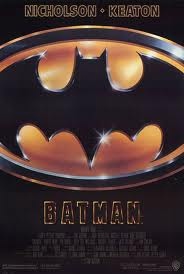With our nation’s 234th birthday occurring last week, I felt compelled to rewatch “Mr. Smith Goes To Washington.” A fairly busy schedule on the 4th coupled with the advent of a new full-time job have delayed my viewing of this classic until this morning. I have seen this movie twice before, but it still stirs my soul.
If you haven’t seen it, stop reading immediately and watch it. If you live near me, I will gladly lend you my copy. If not, check amazon.com for a cheap DVD or even VHS.
Frank Capra’s 1939 tale of a simple man who is taken advantage of but fights back with a vengeance is a fine example of great acting from some of the best actors of the era, or any era, for that matter. Claude Rains, whose career covered numerous classic films, is wonderful as a senator of uncertain allegiance. His Senator Paine has a deep tie to Jefferson Smith(Jimmy Stewart)’s past. On the other side of the coin, he’s the main part of a political machine meant to benefit a corrupt profiteer (Edward Albert) from Paine’s home state. This could have been a very cliched villain, but Raines imbued him with a pitiable humanity. Jean Arthur is charming as Saunders, Mr. Smith’s secretary. I would imagine that this role was incredibly fun for her, as there is more than a hint of female independence in Saunders’ character, certainly more than one would be likely to see in any other movie of a similar era. Saunders starts out as a streetwise, cold, and selfish woman, but it’s lovely to see how Jefferson Smith cracks her tough shell with his honesty and blatant optimism. Many of the Capra regulars are present, and make much of their supporting roles. Beulah Bondi is once again mother to Stewart, and she effuses motherly love and pride. Thomas Mitchell, who would later play Uncle Billy alongside Stewart in It’s A Wonderful Life, is light-heartedly fun as Diz, a DC reporter who delights in seeing Smith screw up. An early scene with the governor of Smith’s home state being chided by his eight children for not considering Smith for the vacant Senate seat is wonderfully comical. Guy Kibbee as the governor breaks the dramatic tension often, displaying a rare gift for hilarity and great timing.
I could write for days about the greatness of Jimmy Stewart. We all know his trademark vocal inflections, but this man was a very open and real actor. His Jefferson Smith is polite, soft-spoken, earnest, completely uncynical, and as wide-eyed as they come. In this role, Stewart displays great emotional range throughout, ranging from great elation to being humbled to boiling over with passionate fervor. Seeing his sense of awe as he toured the major monuments of Washington reminded me how great America’s potential is. The first scene at the Lincoln Memorial is especially potent, somehow seamlessly painting a portrait of the USA of 1939 in a relatively short scene. If you’re not moved by this moment, you may not be American. By contrast, the filibuster scene is a rousing inspiration to me. Stewart’s commitment to the scene and to the stubbornness and the unshakable, incorruptible determination that Smith displays is nothing short of breathtaking.
This movie holds up so well partly because of the great writing. The dialogue is sharp, and well-delivered. The entire ensemble finds a very unified rhythm. They fire their lines back and forth like Old West gunslingers. The camera angles are quite ahead of their time. The dinner scene in the governor’s mansion and the filibuster scene are great examples of this striking cinematography.
“Mr. Smith Goes To Washington” reminds me of the aspects of being an American that seemed exciting to me as a child. As I watched attentively, I was struck by how the corruption portrayed here could easily happen today. The lengths that Senator Paine and the man that owns him go to in order to defame Smith is, to me, nauseating. I have no doubt, however, that even today there are Jefferson Smiths out there who will gather their courage and take a stand for the small and the weak when it would be easier to turn their heads. Maybe the result won’t be as dramatic as Stewart’s filibuster scene – after all, Capra isn’t around to stage it – but I hope and pray that they will do whatever it takes to try to champion the lost causes. After all, they’re the only ones worth fighting for.
I don’t enjoy political discussions. Somehow, someone is inevitably blamed for some great wrong.
Watching MSGTW made me long for some sort of attempt on the part of politicians to cross party lines and try to step beyond their own selfishness in order to accomplish something for the greater good. In the meantime, I’m dreaming of what America could still achieve…











